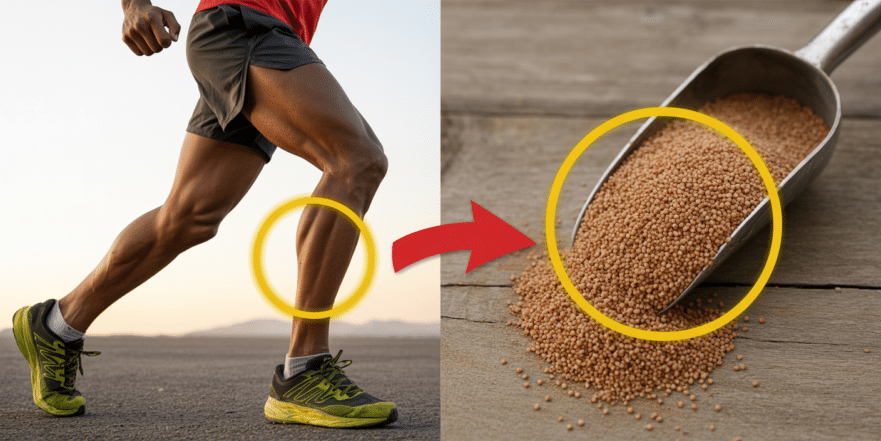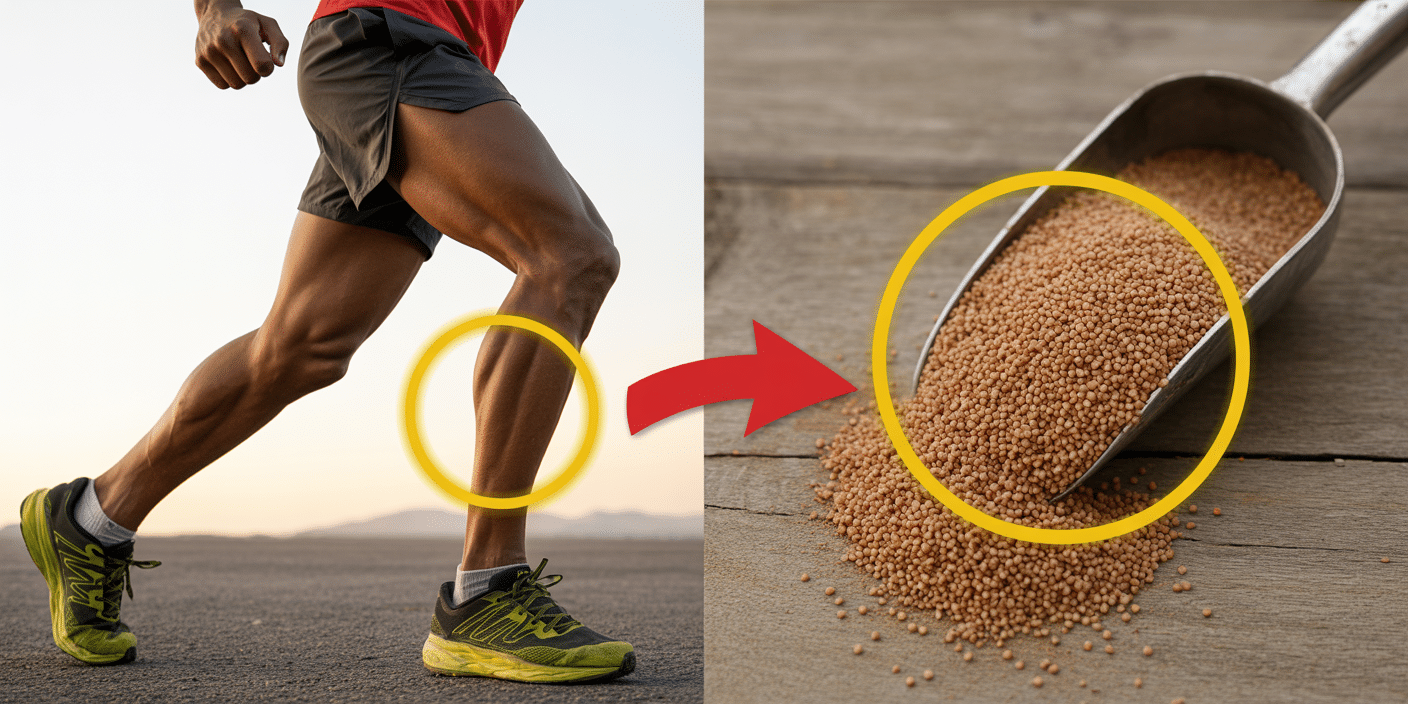
Pay close attention. Today, I’m going to talk to you about five seeds that contain almost as much protein as an egg. This information is absolutely critical for combating a serious condition that affects many people over 40, 50, or 60 and severely limits their quality of life. You’re about to learn that it’s not normal to struggle climbing a flight of stairs, to feel weak, or to lose your balance when you stand on one leg to put on your pants. Even if you’re 70 years old, this condition, known as sarcopenia, is not an inevitable part of aging.
Sarcopenia is the progressive loss of muscle mass and strength that weakens you and makes it difficult to perform everyday activities. You may have been told that this is just a normal part of getting older, but that is simply not true. You can fight back, and the seeds I’m about to share with you are powerful weapons in your arsenal. Furthermore, sarcopenia doesn’t just affect your muscles; it also impacts your bones, leading to osteoporosis and increasing your risk of fractures from minor falls or bumps. This is why our discussion today is so important. And make sure you stay until the end, because the number one seed on our list is little-known, incredibly affordable, delicious, easy to prepare, and a true nutritional powerhouse. (This article is based on the expertise of Dr. Veller)
Key Takeaways
- Sarcopenia is Reversible: The age-related loss of muscle mass, strength, and function is a treatable condition, not a mandatory part of aging.
- Protein is Paramount: Consuming adequate high-quality protein is essential for stimulating muscle protein synthesis to rebuild and maintain muscle tissue.
- Seeds are Superfoods: Certain seeds are densely packed not only with protein but also with healthy fats, fiber, and crucial minerals like magnesium and zinc that support muscle and bone health.
- Preparation Matters: How you prepare seeds like chia and flax is critical. Soaking or grinding them is necessary to break down their tough outer shells and unlock their full nutritional benefits.
- Food is Medicine: By incorporating these five seeds into your diet, you can actively combat sarcopenia, strengthen your bones, improve your balance, and maintain your independence and vitality for years to come.
Let’s dive into the five seeds that can help you rebuild your strength and reclaim your health.
5. Sunflower Seeds
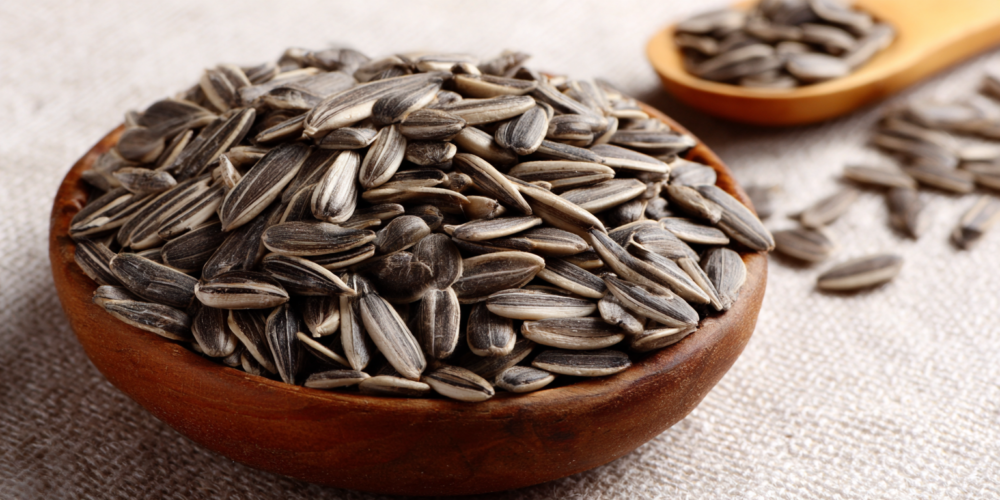
Kicking off our list are the humble but mighty sunflower seeds. You can use them raw, but I highly recommend toasting them. Why? Toasting enhances their nutty flavor, and it only takes about five to seven minutes in a dry pan. A word of caution: many popular packaged sunflower seeds are loaded with salt. You want to avoid those and opt for natural, unsalted versions. You can also use them ground.
How much should you aim for? About 28 grams, which is roughly two to three heaping tablespoons of sunflower seeds per day. This serving provides you with about 6 to 7 grams of high-quality protein and 14 grams of healthy fats. But that’s not all. It also delivers up to 40% of your daily required Vitamin E. And for those of you wondering about magnesium supplements, listen to this: those two to three tablespoons of sunflower seeds give you up to 25% of the magnesium you need in a day. When we’re talking about rebuilding muscle, what could be better than a food that provides protein, antioxidant Vitamin E, and essential magnesium all in one? It’s a fundamental food for muscle repair.
4. Pumpkin Seeds
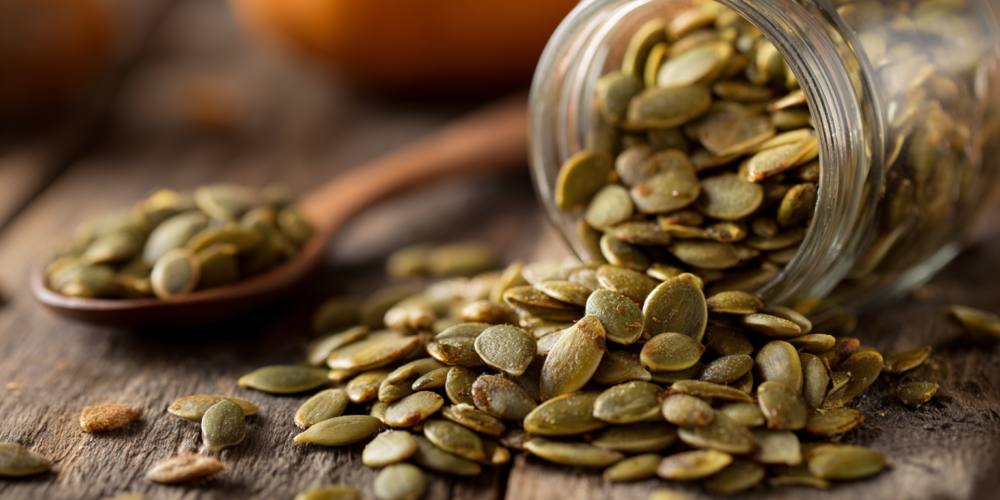
Why did pumpkin seeds make this list? Because among the many proteins they contain, they have a special building block called leucine. Leucine is a branched-chain amino acid (BCAA) that is absolutely fundamental for triggering muscle protein synthesis. It’s like the ignition key for your body’s muscle-building engine. But the benefits don’t stop there. Just like sunflower seeds, pumpkin seeds are a fantastic source of magnesium and zinc.
Let’s talk about zinc for a moment. Zinc plays a crucial role in helping your body produce testosterone. As we age, testosterone levels naturally decline in both men and women, which is a contributing factor to muscle loss. Consuming zinc-rich foods like pumpkin seeds can help support healthy hormone levels. Just one to three tablespoons of these seeds can contain up to 10 grams of protein.
And remember the magnesium? A typical magnesium supplement capsule that you buy at the store contains between 100 and 300 mg. Do you know how much magnesium is in two or three tablespoons of pumpkin seeds? Between 140 and 180 mg. That means a small handful of pumpkin seeds is practically a magnesium supplement in itself—fundamental for your diet, your overall health, and especially your muscles. Human studies have even shown that pumpkin seeds can reduce systemic inflammation in the body, particularly in the muscles. Thanks to their phosphorus, calcium, and zinc content, they also help strengthen your bones. I love their crunchy texture and often add them to salads or even sprinkle them over yogurt.
3. Chia Seeds

Now we come to numbers three and two, which might surprise you because while they are very well-known, many people don’t realize they are consuming them incorrectly. Let’s start with chia seeds. Chia seeds do have moderate amounts of protein, along with excellent fiber, healthy omega-3 fats, and powerful anti-inflammatory and antioxidant properties. They are fantastic for improving gut health. But there’s a catch.
Chia seeds are covered by a very tough outer layer, a shell that your digestive system cannot break down effectively. When you eat them whole and dry, they pass through your intestines almost completely intact and end up in the toilet. This can be useful for people dealing with constipation, as they add bulk, but it does very little for those who want to absorb their protein, healthy fats, and minerals like selenium. To unlock their power, you must break down that shell. I recommend consuming two to three tablespoons of chia seeds (either black or white varieties are fine) daily, but you must prepare them in one of two ways.
The first method is to soak them overnight in water. You might say, “Doctor, when I do that, it creates a weird, slimy gel that I don’t like.” My solution is to soak them overnight and then blend that gel into my morning smoothie, yogurt, or fruit bowl. This way, you don’t even notice the viscous texture. The second method is to grind them. You can buy a simple coffee grinder or use a mortar and pestle to mill them into a powder. Once ground, your body can easily absorb all the incredible nutrients inside.
2. Flax Seeds
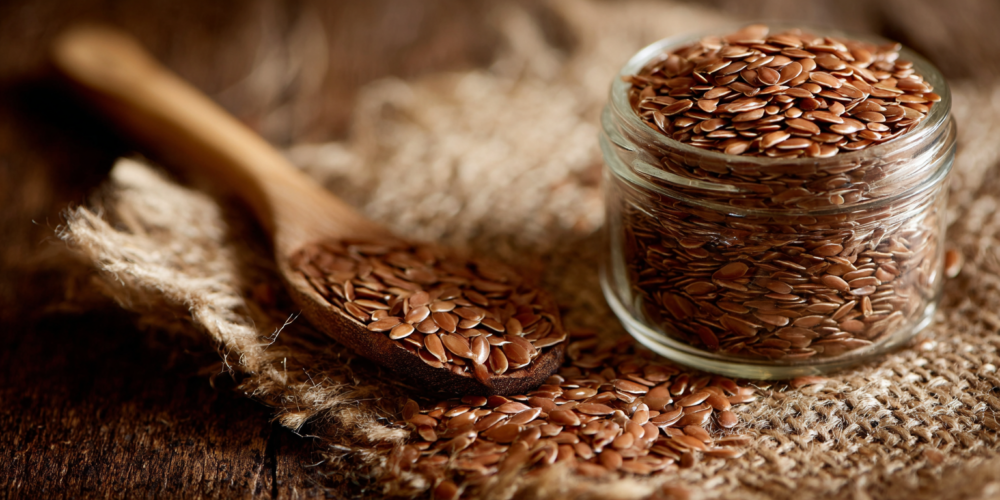
Just like chia seeds, flax seeds are nutritional powerhouses that are often misused. They share many of the same properties: moderate protein, anti-inflammatory omega-3s, and tons of fiber. They also share the same problem: an indigestible outer hull. Therefore, the same rules apply. To get the protein and other nutrients from flax seeds, you must either soak them or grind them.
Again, aim for two to three tablespoons per day. You can soak them for at least 45 minutes in a liquid like almond milk or yogurt before eating, or you can grind them fresh and sprinkle the meal over your salads, oatmeal, or baked goods. There is one crucial piece of advice for anyone starting to eat more chia or flax seeds: you must drink plenty of water. These seeds are incredibly absorbent; they are like tiny sponges that soak up water in your gut. If you don’t increase your water intake, they can actually rob your body of water, leading to hard stools and worsening constipation. However, when you consume them with enough water, they work wonders for your digestive transit. So, remember: soak or grind, and drink lots of water.
1. Amaranth
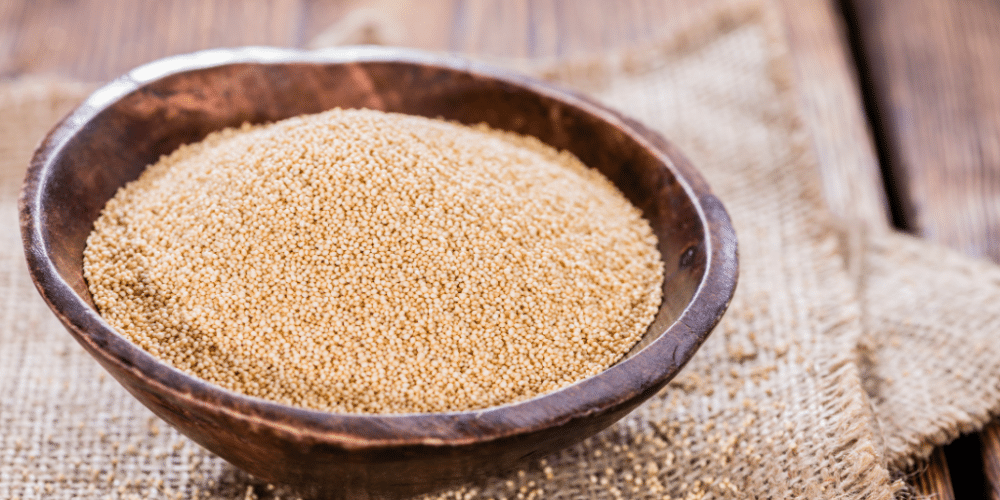
And now for the number one seed, a true hidden gem that few people know about: Amaranth. This pseudocereal holds some fundamental keys to muscle health. First, it contains a significant amount of an amino acid that is rare in most seeds and grains we eat: lysine. But it also boasts a moderate to high amount of protein—about 13 to 20 grams of protein per 100-gram serving.
The real magic of amaranth’s protein lies in its quality and bioavailability. While your body might only absorb 50-60% of the protein from a source like pumpkin seeds, the protein in amaranth is nearly 90-100% absorbable. This means that with half the amount, you’re absorbing almost double the usable protein. Your intestines tolerate it incredibly well. Furthermore, the protein in amaranth is complete, meaning it contains all nine essential amino acids that your body cannot produce on its own.
This makes it a perfect protein source, on par with animal products. What other benefits does it have? It’s inexpensive and easy to find. It cooks in just 15-20 minutes, just like rice or quinoa. You simply boil it in water, and it has a delicious, nutty flavor. In fact, official health sources around the world recommend adding amaranth to the diets of people on plant-based regimens and especially for older adults looking to increase their protein intake to fight sarcopenia.
Bonus: Quinoa

I have to mention a bonus player that is too good to leave out: quinoa. Like amaranth, quinoa is a complete protein, containing all essential amino acids. It has a large amount of protein and is a fantastic alternative for those who eat rice every day. It’s delicious, cooks in about 15 minutes, and is affordable and easy to find. However, there is one detail to be aware of. Quinoa seeds are naturally coated in saponins, a compound that can interfere with digestion and gives the seeds a bitter, soapy taste. To remove the saponins, you must rinse the quinoa thoroughly under running water for a minute or two before cooking. For best results, soak it for 15-20 minutes, then rinse the water away and cook it in fresh water. This simple step removes the saponins, allowing your body to better utilize its nutrients and enhancing its delicious flavor.
Conclusion
Remember, aging does not have to mean becoming frail, weak, or unable to move. If you stop moving, regardless of your age, you will lose strength, balance, and the ability to care for yourself. Consuming these five seeds—plus our bonus, quinoa—is a fundamental step toward improving the health of your muscles and bones. It’s about more than just fighting sarcopenia; it’s about being freer, living better, and maintaining your vitality. While eggs, avocados, meat, chicken, and salmon are all fantastic sources of protein, these seeds are essential for incorporating high-quality plant-based protein and minerals that are hard to find elsewhere. I hope this information has been useful and empowers you to take control of your health.
Source: Dr. RN Veller

